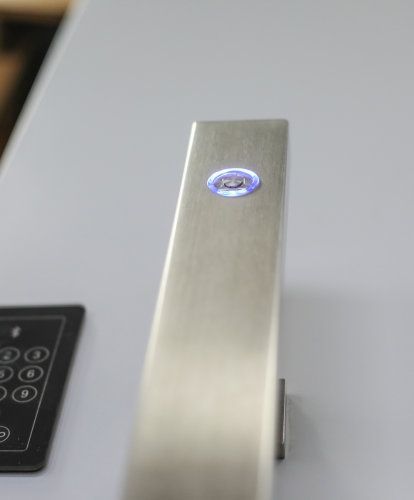Glossary of terms - Terrace doors and windows
What are the individual elements of the windows called? What is hidden in the description of their parameters?


Overlay structure - A method of constructing external doors using double-sided covers, most often made of aluminium. With the proper fit, the door leaf is a uniform plane from both the inside and outside. This solution gives the door a modern and elegant look.
Application - A decorative element mounted on the door panel, made of stainless steel. The shape and appearance of the decor can be personalised to the individual needs and design of the door.
Decor - A decorative element mounted on the door panel, made of painted or veneered aluminium sheet, stainless steel or stone veneer.
Milling - A decorative element on an external door, consisting in specific shapes and grooves in the door panel to give it a unique look.
Marquetry - A decorative filling of door milling made of stainless steel, which is either flush with the plane of the leaf or protrudes.
Door handle - An element, in the form of a handle, used to open the door. There are different types of door handles that depend on the type of escutcheons attached.
There are handles on long escutcheons - long (where the handle and the keyhole are in one part) and short, so-called split escutcheons (which consist of two parts, and the lower escutcheon has a key cylinder or thumbturn cylinder).
Glazing package - Standard solution in glazing windows and doors. The current standard is the use of double- or triple-glazing, which is separated with a spacer and filled with noble gases. The space between two panes separated by a spacer is called a chamber. One-, two- or three-chamber glazing units are available on the market.
Door panel - The largest share in the door’s surface. It determines the appearance of the door leaf from the outside and inside.
Threshold - The bottom part of the door frame, located above the floor level, that ensures door functionality and protection against cold. As a standard, an aluminium threshold with a thermal break is used in overlay aluminium doors.
Door pull handle (also known as a door knocker) - A decorative element of the door that replaces the standard handle and is used to open the door.
Skylight - An additional un-openable glazed door element. The skylight consists of a frame and a filling, which can be entirely made of a glazing unit. Skylights can be mounted on one side of the door, on both sides and/or above it. Their use allows for lighting the interior and giving the entrance more character.
Door leaf - The movable, opening part of the door. It is equipped with a handle that enables operation and control of the leaf.
Door frame - A structural element of the door embedded in the wall, which permanently connects it to the door opening. One or more leaves are attached to the frame via hinges.
RC (Resistance classes) - A six-level scale that defines the class level of burglar-proof protection for windows and doors. In a detached home, the most commonly used products are in classes RC2\RC3. The PN-EN 1627 standard provides six classes of burglar-proof protection for building openings, like windows and doors. Certificates confirming increased resistance to burglars are issued by certification bodies operating in the field of conformity assessment, which have active accreditation for this scope of tests.
Lock cylinder - An element that secures access to the interior, guaranteeing the security of your home. Usually, a key is used to open the cylinder.
Door lock (also known as a multi-point espagnolette) - A mechanism built into the door leaf. It protects access to the interior, guaranteeing adequate stability and security of the door.
Heat transfer coefficient - A value that tells you how much heat is lost per square metre of surface (windows and doors) in one hour, if the outside air temperature is one degree lower than in the room. We denote the heat transfer coefficient by the symbol U [W/m2K]. The lower its value, the better. Low heat transfer coefficient means that the windows and doors have good thermal insulation properties and guarantee the reduction of heat loss.
Door hinge - A type of fitting that allows the door to move. Hinges usually consist of two articulated parts: one of which is attached to the door leaf and the other to the frame. The most commonly used solutions are roller hinges, which are the visible part of the door, and hidden hinges, the design of which allows them to be located in a way that makes them invisible in closed doors.
Muntin bars - Decorative, thin slats that divide the panes into fields. The most commonly used solutions are Viennese muntins, which are glued to the glass from the outside, and the internal muntins, which are placed inside the insulating glass units.

What are the individual elements of the windows called? What is hidden in the description of their parameters?
Dear guests, our website uses cookies. You can specify the conditions for storing or accessing cookies. For more information on cookies and other sensitive data, please see our Privacy Policy and GDPR.
If you have any questions about our cookie policy, please do not hesitate to contact us.